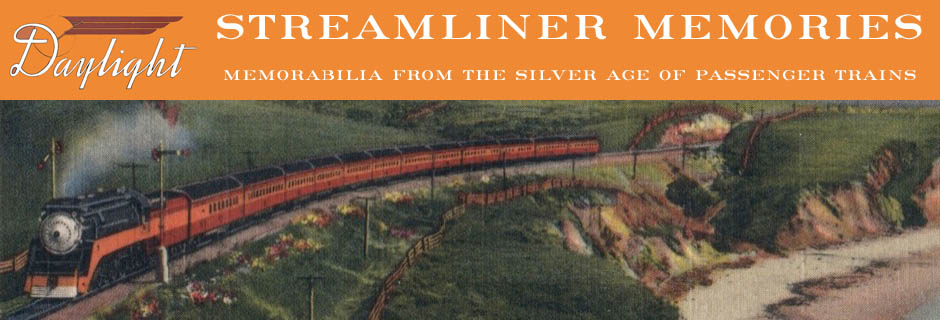To celebrate the centennial of the start of its construction, the Baltimore & Ohio held a two-week-long Fair of the Iron Horse in September and October, 1927. Part of the fair was a daily presentation of restored or replicated historic locomotives going back to 1827, some of which the B&O built or restored for the 1893 Columbian Exposition in Chicago. This is the first seven of a series of 15 postcards that people could buy (for 15 cents–about $2.25 in today’s money) about these locomotives.
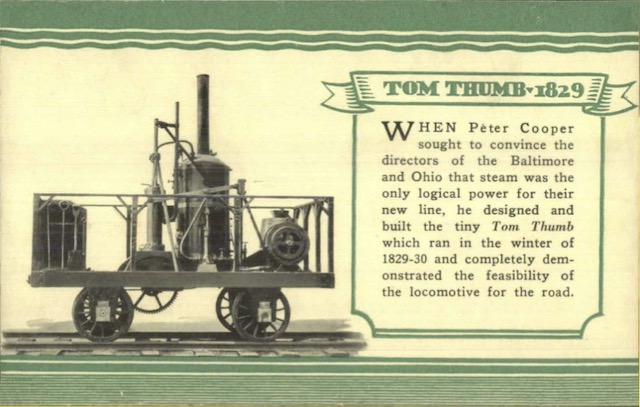 Click image to download a 155-KB PDF of this postcard.
Click image to download a 155-KB PDF of this postcard.
When the railroad started construction and the rails hadn’t yet been extended outside the city of Baltimore, the B&O’s first railcars were pulled by horses. In 1829, Peter Cooper built the famous Tom Thumb solely to demonstrate that steam power was superior to horse power. The locomotive was never used in revenue service and the replica built by the B&O in 1927 differs from the original in several significant ways. It still exists, along with many of the other locomotives depicted on these cards, at the B&O Museum in Baltimore. The B&O gave Cooper a contract to build five more but he failed to fulfill the order.
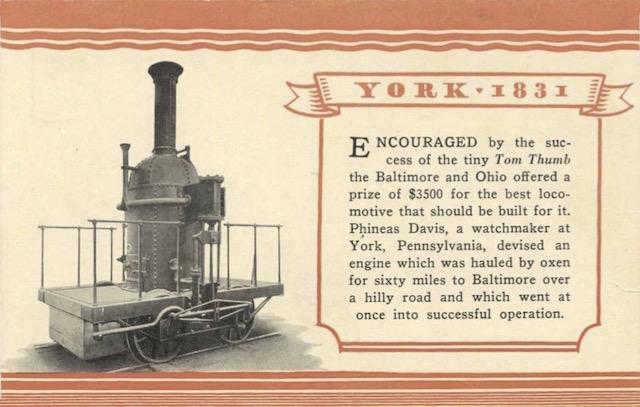 Click image to download a 166-KB PDF of this postcard.
Click image to download a 166-KB PDF of this postcard.
When Cooper failed to deliver, B&O offered $3,500 (more than $100,000 today) to anyone who could built a workable locomotive. a York, Pennsylvania inventor named Phineas Davis responded with the Yorkin 1831. It actually operated in revenue service for a year before being replaced by the Atlantic.
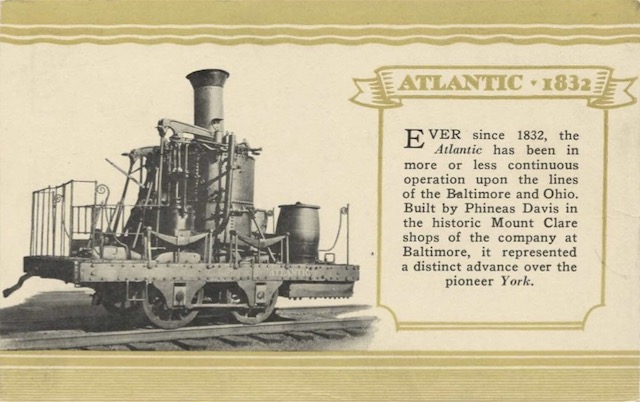 Click image to download a 135-KB PDF of this postcard.
Click image to download a 135-KB PDF of this postcard.
Davis also built the Atlantic, making many improvements over the York. The B&O paid him $4,500 for this locomotive, which went into service in 1832. Unfortunately, Davis died in a railway accident in 1835. The Atlantic was the first of several similar locomotives that Davis had delivered before he died; it was scrapped in 35, perhaps due to damage in the derailment. The B&O later took a similar 1836 locomotive, the Andrew Jackson, and rebuilt it (and renamed it) to resemble the Atlantic.
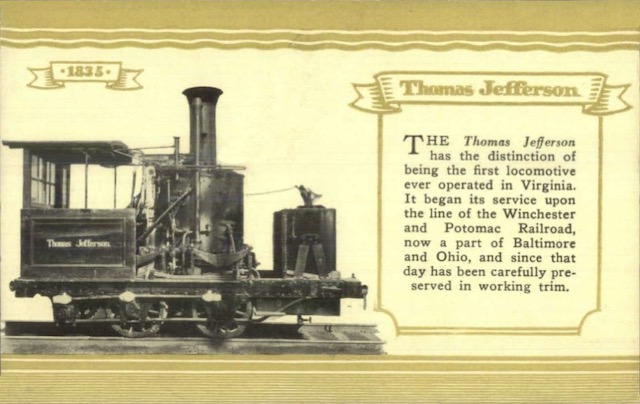 Click image to download a 140-KB PDF of this postcard.
Click image to download a 140-KB PDF of this postcard.
This postcards says that it shows the Thomas Jefferson, an 1835 locomotive. Actually, this is a sister and except for the cab similar to the 1836 Andrew Jackson. It started out as the John Hancock and was renamed for the Columbian Exposition.
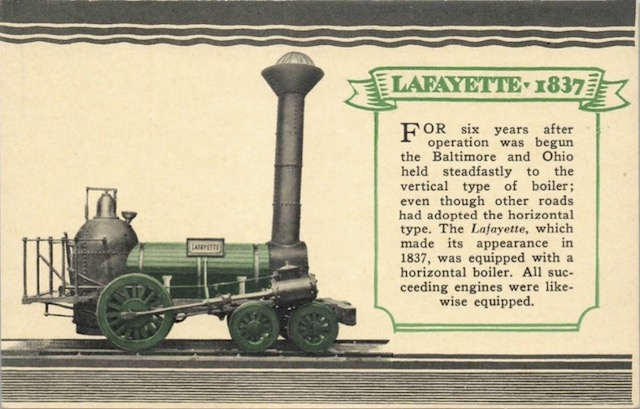 Click image to download a 195-KB PDF of this postcard.
Click image to download a 195-KB PDF of this postcard.
The first B&O locomotive with a horizontal boiler, the Lafayette was built by the Norris Locomotive Works in Philadelphia in 1837. The locomotive did not survive to the end of the century so the B&O built a replica for the fair.
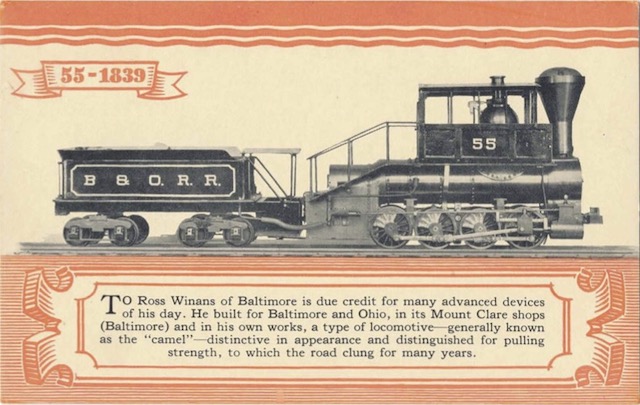 Click image to download a 169-KB PDF of this postcard.
Click image to download a 169-KB PDF of this postcard.
After Davis died, the B&O’s main engineering work was done by Ross Winans. Winans had worked with both Cooper and Davis on their locomotives and built the John Hancock after Davis died. This 1839 locomotive, known as a camelback for having its cab on the top of the boiler, was his first major departure from Davis’ designs. I’m not sure, but I think this camel is also a later locomotive that was rebuilt to look like the 1837 edition.
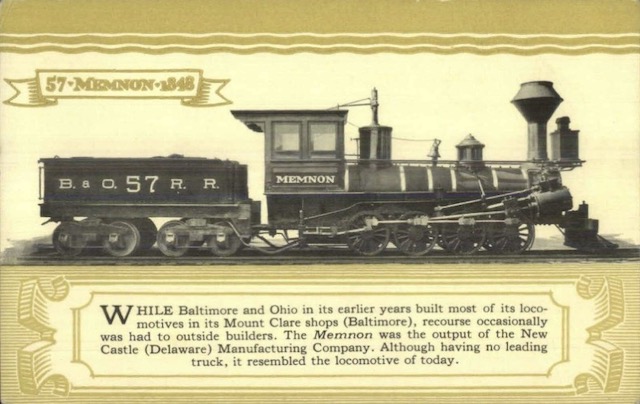 Click image to download a 144-KB PDF of this postcard.
Click image to download a 144-KB PDF of this postcard.
Built in 1848 by a locomotive manufacturer in Delaware, the Memnon is the first locomotive in this series that looks like what we think of as a locomotive (at least those of us conditioned by watching Western movies and television shows). It continued to work for the B&O until 1892 and then was restored to its original appearance for the Columbian Exposition.
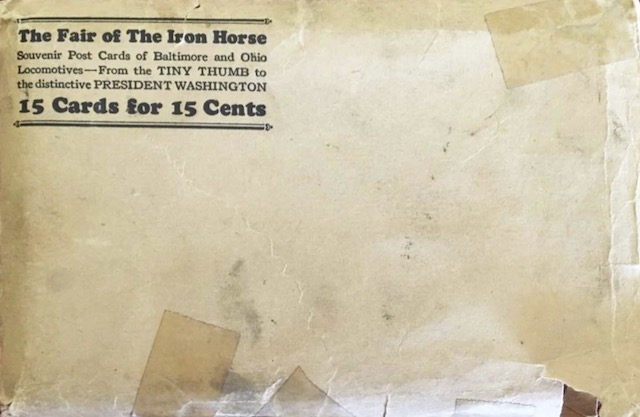 Click image to download a 84-KB PDF of this envelope.
Click image to download a 84-KB PDF of this envelope.
Here’s the envelope the cards came in. I’ll show the rest of the cards tomorrow.
